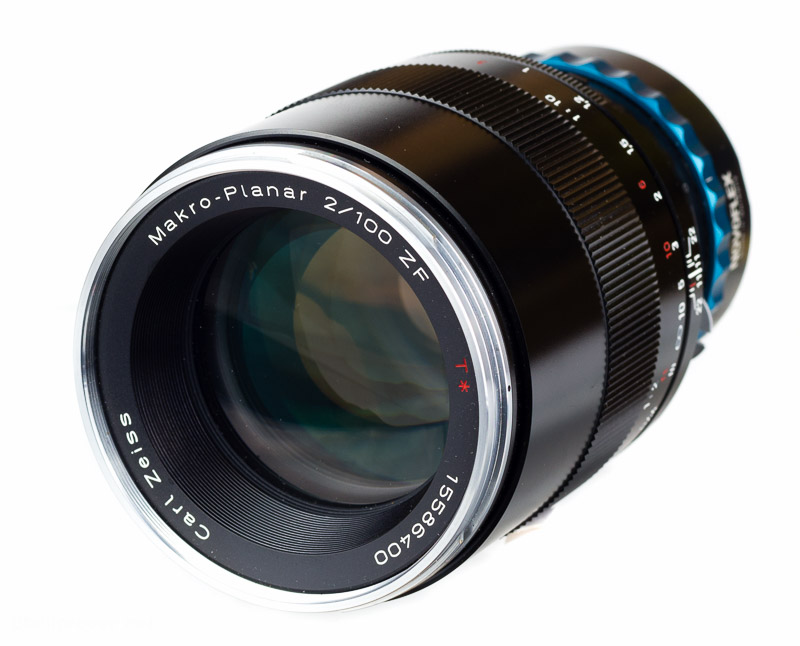 The Zeiss Makro-Planar 2/100 is faster than almost any other macro lens and one of the sharpest lenses ever built. Lets put it to the test!
The Zeiss Makro-Planar 2/100 is faster than almost any other macro lens and one of the sharpest lenses ever built. Lets put it to the test!
Sample Images
Just click on any image to get to the full resolution version.
Specifications
-
- Diameter: 76mm
- Length: 89mm (ZF Version)
- Weight: 660 g (ZF Version
- Filter Diameter: 67 mm
- Number of Aperture Blades: 9
- Elements/Groups: 9/8
- Close Focusing Distance / reproduction ration: 44 cm / 1:2
- Mount: Canon EF, Nikon F, Pentax K
More information in Zeiss’ official data sheet.
I bought this lens from my own money without any support from the manufacturer and used it for four months.
The Carl Zeiss Maro-Planar 2/100 usually sells for around $950 used at ebay.com (affiliate link).
In Germany you can buy it used for around 800€ at ebay.de (affiliate link).
Versions
In 2006 Zeiss released this lens in Canon EF (ZE), Nikon F (ZF) and Pentax K (ZK) mount. The ZK version has since been discontinued. In 2015 Zeiss introduced the Milvus family of lenses which are mostly ZE/ZF.2 lenses with a new exterior and weather sealings but the same optics. It is a manual focus lens in all versions.
The ZE version features electronic contacts but it doesn’t have an aperture ring so you have to control the aperture with the camera. When adapted to the Sony a7 series with an electronic adapter you will get exif information which you won’t get with the ZF/ZF.2 version.
The ZF version of the Makro-Planar is the one I own and which you see in the images. It comes in Nikon’s F-mount and has a nice aperture ring but it doesn’t have any electronic contacts. There is also a younger ZF.2 version which has electronic contacts as does the Milvus version.
To adapt the Macro Planar 2/100 to my Sony a7 I used a Novoflex adapter (affiliate link).
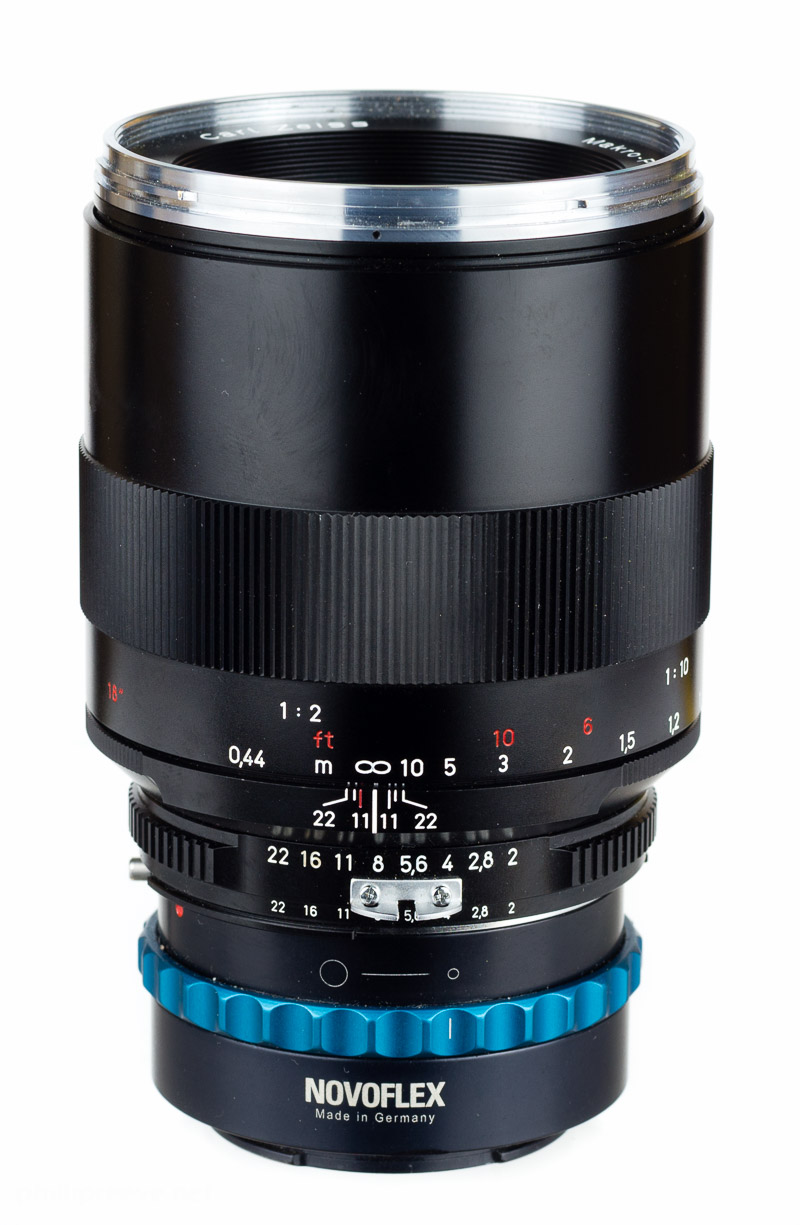
Build Quality
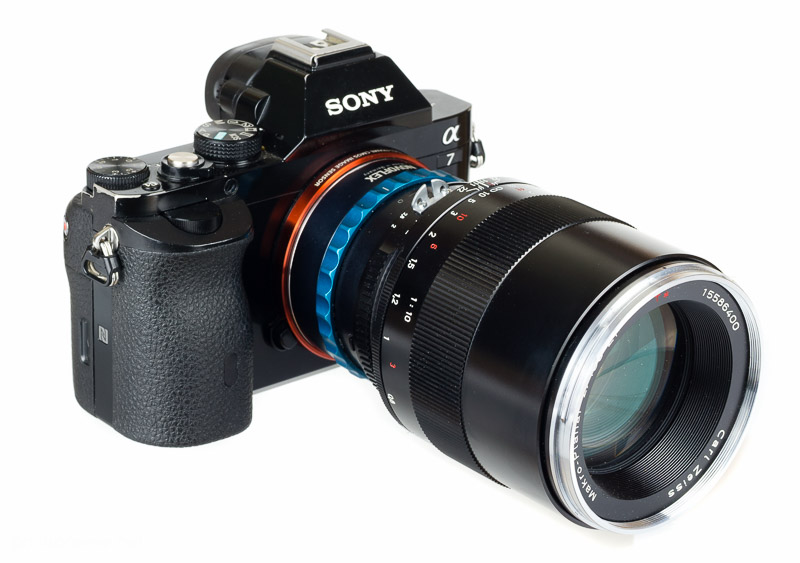
As expected the Zeiss feels super solid. It has an all-metal exterior and everything but the lens hood fits very tightly.
All markings are engraved.
The Makro-Planar is made in Japan.
Usually I don’t mention lens caps but I was flabbergasted by the one this $1000 + lens came with. It is made from the cheapest feeling plastic I have ever handeld and feels anything but solid and I soon replaced it with a solid one from another manufacturer.
Size, Weight and Handling
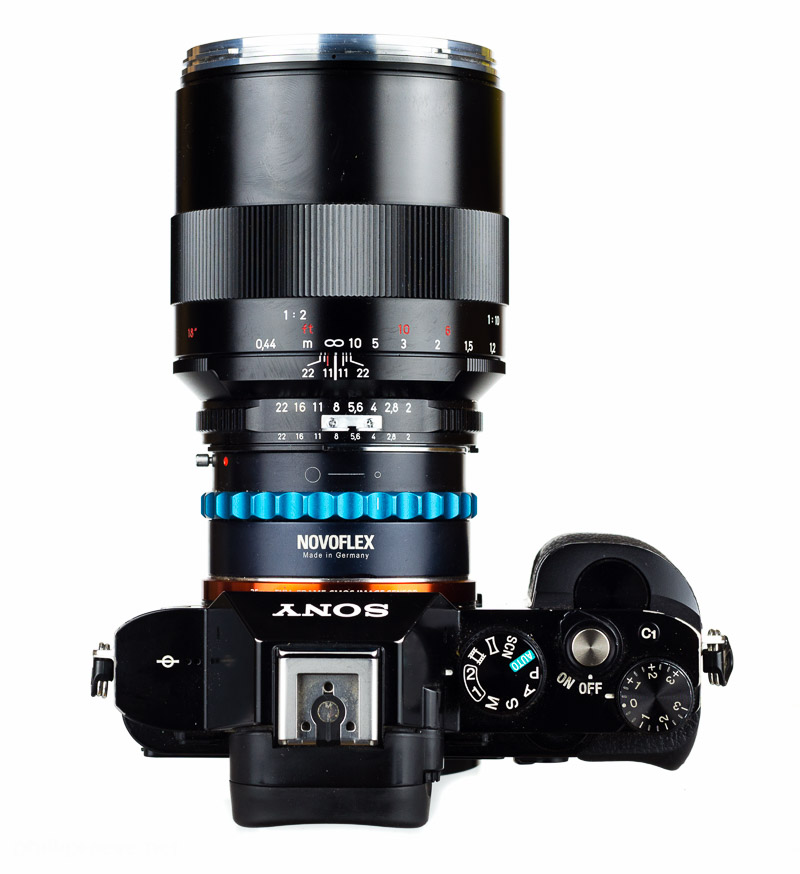
The Zeiss Planar is a rather heavy and not too small lens. On a a7 it doesn’t really feel balanced, with an L-bracket handling is okay. On the a7ii with it’s deeper grip handling is okay even without an L-bracket.
The focusing ring turns about 350 degrees from 0.44 m to infinity. It has zero play and it is quite grippy. The resistance of the focusing ring is quite high, I need at least two fingers to turn it and the focusing experience at longer than 2 m distances isn’t too pleasant because of the resistance and the very short focus throw at these distances.
The aperture ring has half-stops from f/2 to f/22 which register well enough but I have used nicer aperture rings. What I like about the aperture ring is that it is very grippy. Because my copy is the ZF version it has a coupling prong which is a bit annoying.
The Zeiss Makro-Planar 2/100 extends a lot when it is focused at shorter distances.
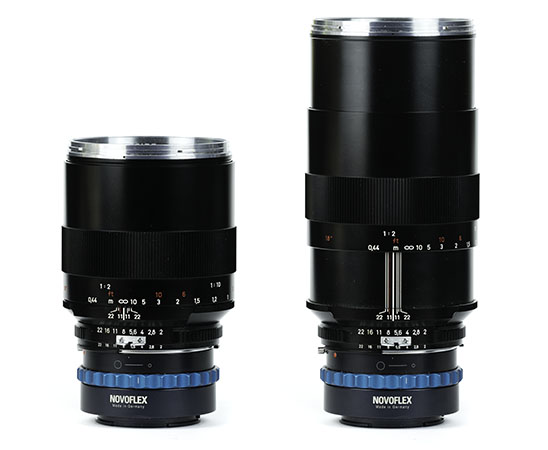
Lens Hood
The lens hood is quite large and at least on my copy it has some play and it rattles.
It is made from metal and lined with some felt-like stuff on the inside.

Filters
The 67 mm filter thread is made from metal.
The front of the lens does not rotate so polarizers are easy to use.
Image Quality
Vignetting
At f/2 vignetting is rather strong at about 1.7 stops, moderate at f/2.8 (1 stop) and from f/4 it is average to low at 0.7 stops.
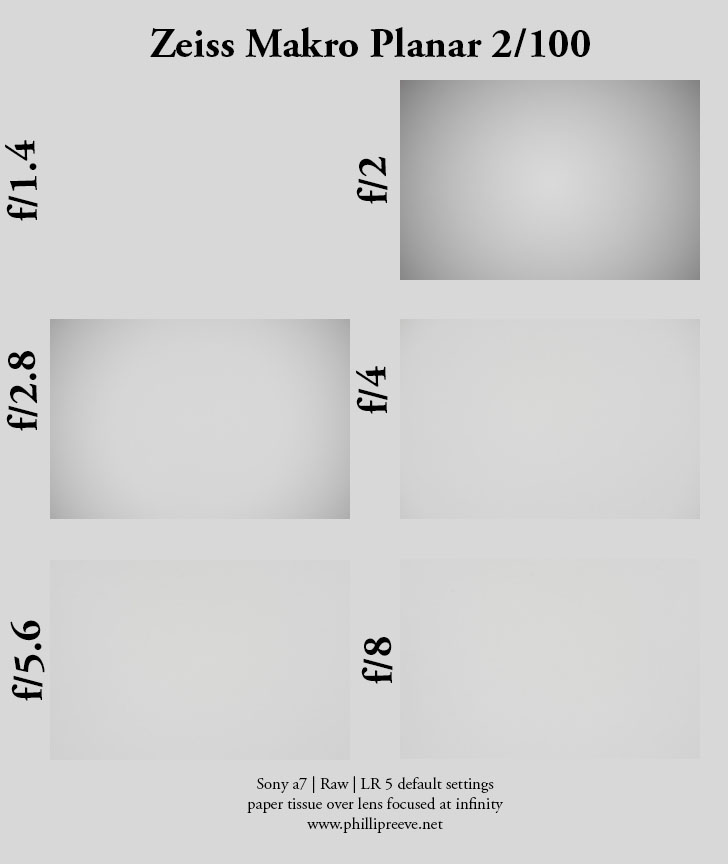
Flare Resistance
The flare resistance is good but not flawless. I never saw any ghosting but some veiling flare can happen.
Distortion
There isn’t any.
Chromatic Aberrations
Lateral CA is corrected almost perfectly, one of the best performances I have seen so far in any lens.
Axial CA is the biggest issue I have with the Makro Planar. Of course it only is an issue with certain subjects but it can be quite distraction from the otherwise spectacular performance.
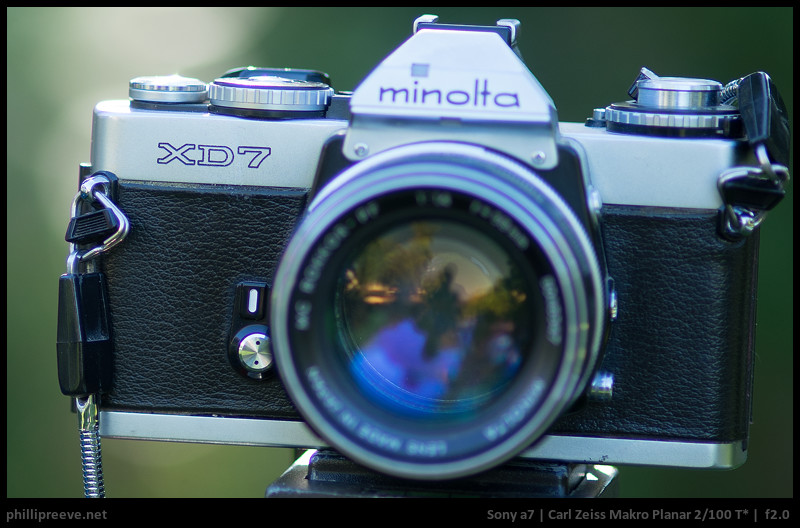


Bokeh
The Zeiss MP 2/100 has really smooth bokeh which is also quite smooth in the transition zone. Only the cat-eyes-effect can be a bit distracting.
Stopped down the aperture stays well rounded.
Sunstars
Not a strength of the Zeiss Macro 2/100.

Close Focus Performance
The Zeiss 2/100 of course carries the Makro in it’s name and it focuses quite close but only to a 1:2 magnification ratio while most modern AF macros focus down to 1:1.
I don’t have the tools available to create a really meaningful sharpness-test this close but thankfully Über-lens-geek Roger Cicala has measured it at 1:2 magnification and it still delivers a great performance with even a little more contrast and only a little less sharpness but an amazingly flat MTF curve.
Sharpness
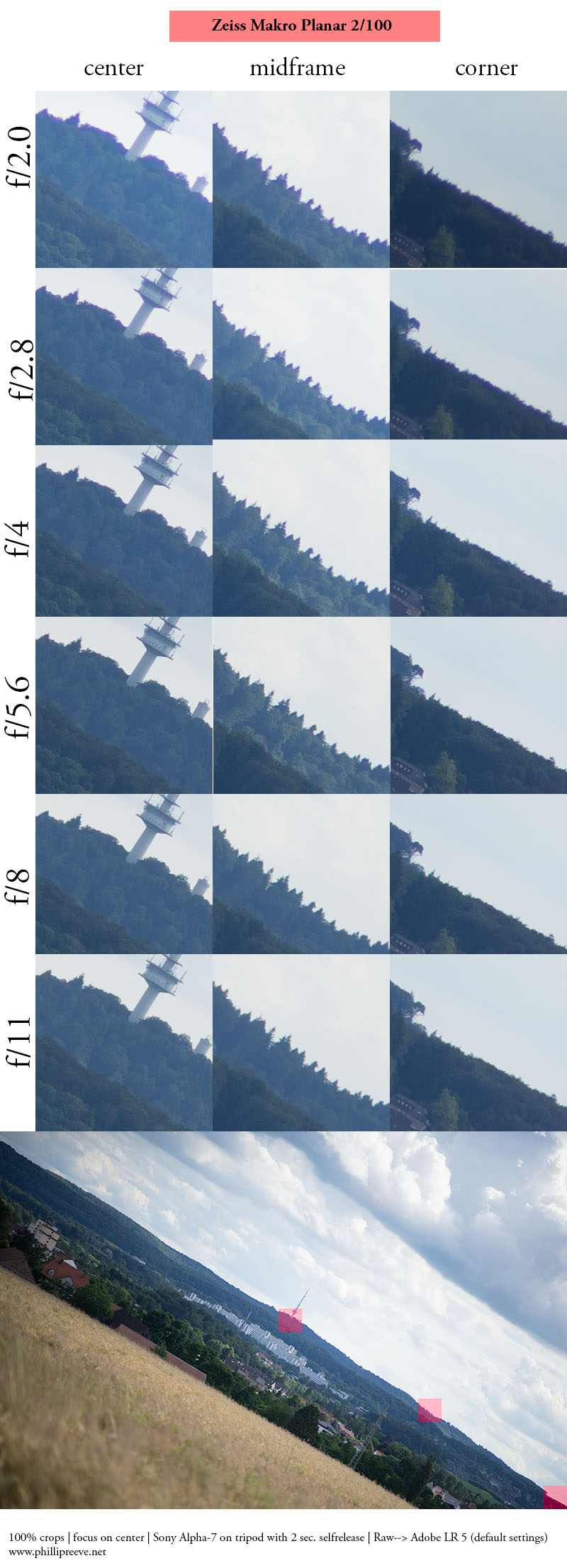
The full aperture series can be found in my flickr Zeiss Makro-Planar 2/100 album.
f/2.0: This is the first time I write this but the Zeiss Makro-Planar 2/100 shows excellent sharpness across the frame from wide open. LoCA degrades the image quality somewhat though.
f/2.8: A little bump in contrast, less LoCA and Vignetting.
f/4: No LoCA anymore and vignetting is also gone so the performance is just excellent.
f/5.6, f/8: You can’t improve what’s already excellent.
f/11: A little less sharp due to diffraction.
I have never tested a sharper lens before.
Alternatives
Sony G FE 2.8/90 Macro: The Sony doesn’t feel nearly as solid nor does it handle as well and it isn’t as strong in the corners but it has better CA correction, does 1:1 natively, offers AF and it is sharper at macro distances. The Sony has very large sample variation (I had to return the one I bought because of strong decentering).
Tokina AT-X 2.5/90 Macro: The Tokina is smaller, more pleasant to focus, nearly as sharp stopped down and much cheaper. The Zeiss is faster, has much more efficient coatings and better corners at wider apertures.
Laowa STF 105mm f/2: The Laowa has nearly perfect CA correction and a bit smoother bokeh plus a more pleasant focusing ring. The Zeiss is a bit sharper, much less flare prone and focuses much closer.
Olympus OM 2/100: The Olympus is my favorite legacy lens right now. It is quite a bit smaller, more pleasant to focus and the bokeh a tad smoother. It doesn’t focus as close but a close focusing distance of 70cm isn’t too bad. The Zeiss is sharper outside of the center.
Samyang 2/135: The Samyang performs on a similar level optically and corrects CA much better and it is more affordable. It does focus down to 80cm which of course isn’t as close but still respectable. The Zeiss is smaller, lighter and it has very little sample variation while Samyang is known for their bad quality control and limited longevity.
Canon EF 2/135 L: It is not quite as sharp as the Zeiss but it comes close, it is a bit cheaper and the main argument here is probably the AF.
Zeiss 2/135 APO: This is a lens from the same manufacturer with almost perfect CA correction which is even a little sharper in the center but not as good in the corners. Quite a bit more expensive a bit bigger, heavier and focuses only to 1:4.
Conclusion
pros
|
average
|
cons
|
Lets talk about sharpness first: the Zeiss Makro-Planar 2/100 is super sharp from f/2 and not just in the center but across the frame which is an achievement no other lens with a similar focal length can match. Add very pleasing bokeh and very high contrast and you get outstanding image quality.
So is the Zeiss the perfect lens? Not quite. My biggest gripe with it is that it doesn’t correct axial CA very well. How much this affects your images depends a lot on your subject matter but ab few of my images suffered from it. Another smaller issue I found was that I didn’t enjoy focusing it that much because of the rather high resistance and short focus throw at longer distances.
On the other hand it opens up a wider range of applications than other Macros because it is a stop faster but of courses it focuses only down to 1:2. It is also handier than any portrait lens because it focuses much closer but those are usually easier to focus.
In light of the extraordinary performance, wider range of applications and great build quality the price on the used market is surprisingly affordable. Especially compared to Sony’s recent offerings the price/performance ratio is actually quite good.
All in all the Makro Planar is the sharpest lens I have ever tested and it yields outstanding images in most settings but you should be aware of the CA and focusing ring.
The Carl Zeiss Maro-Planar 2/100 usually sells for around $950 at ebay.com (affiliate link).
In Germany you can buy it used for around 800€ at ebay.de (affiliate link).
If this review was helpful to you, please consider using one of my affiliate links. Thanks 🙂
Zeiss Makro-Planar 2/100 T* Sample Images
All images are processed in Lightroom from Raw. Many more full resolution samples in my flickr Zeiss Makro-Planar 2/100 album.
Other Articles
- Manual lenses on the Sony a7 – a beginner’s guide
- 15 affordable manual lenses for the Sony a7 series
- Our other lens reviews
This site contains affiliate links. If you make a purchase using any of the links marked as affiliate links, I may receive a small commission at no additional cost to you. This helps support the creation of future content.
Latest posts by Phillip Reeve (see all)
- Review: Samyang AF 75/1.8 FE - April 12, 2021
- The FE-List now has 113 lenses on it - March 25, 2021
- 2020 – Year’s end review - December 28, 2020
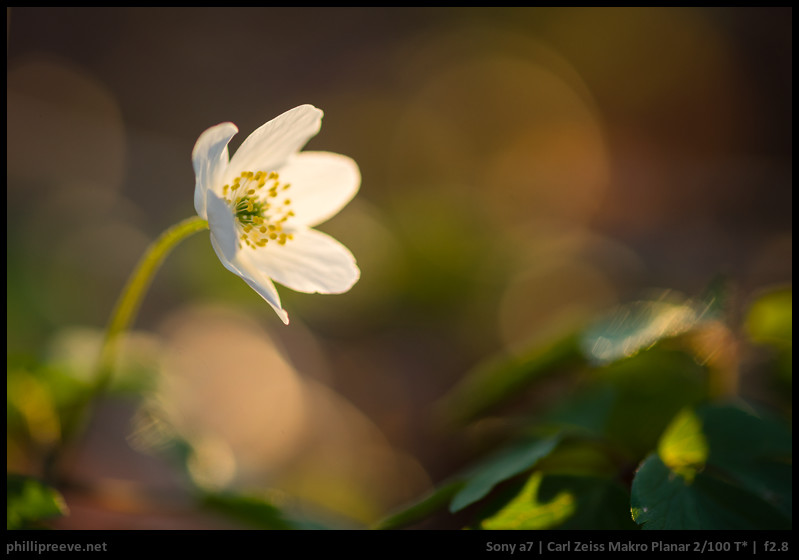

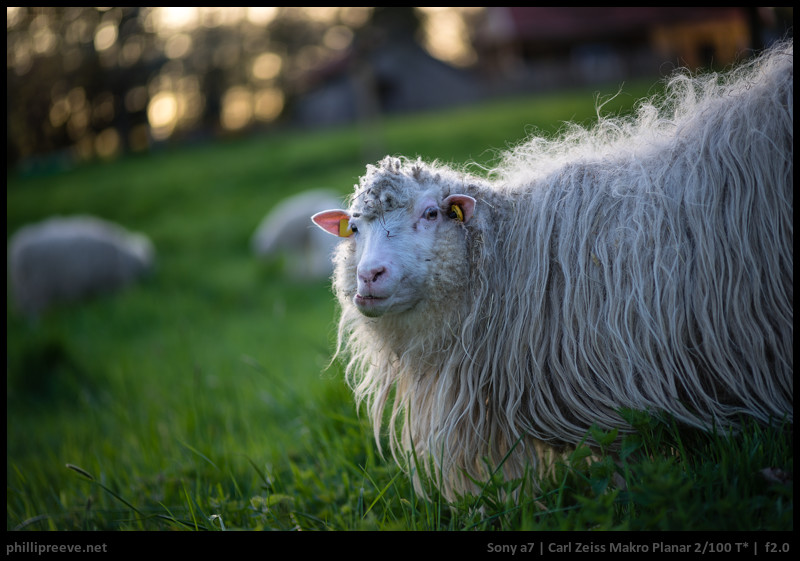

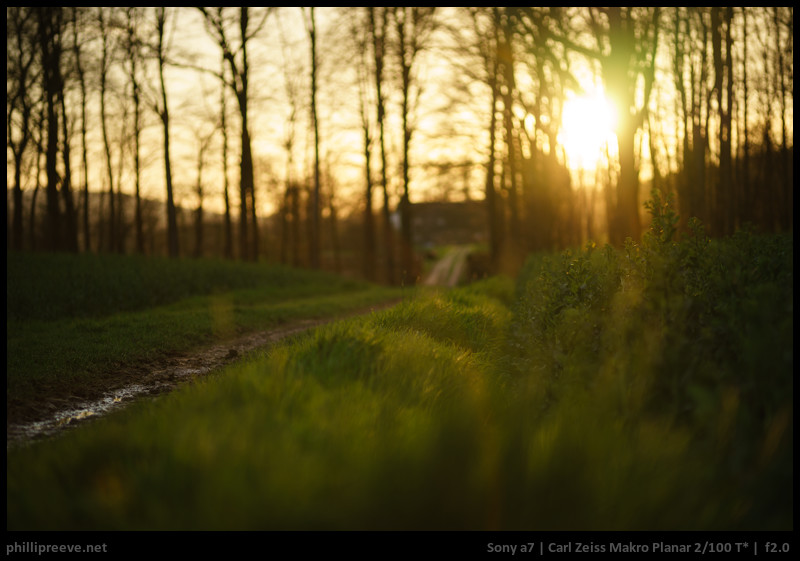
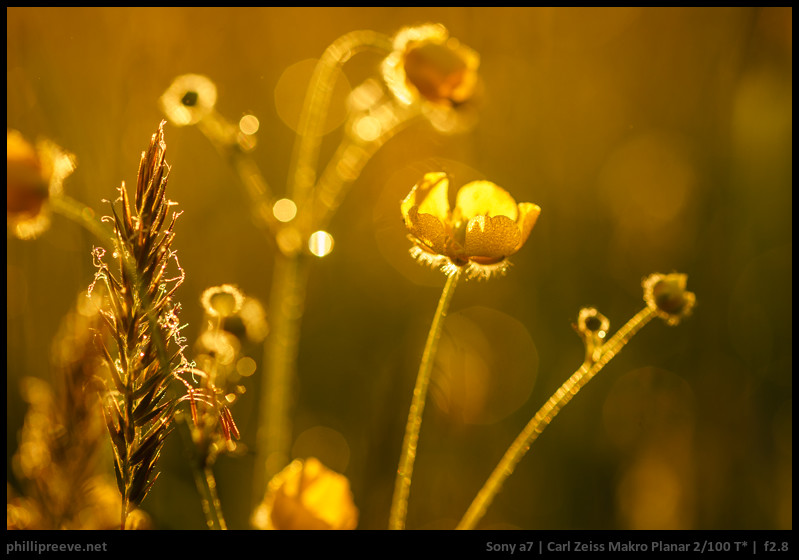
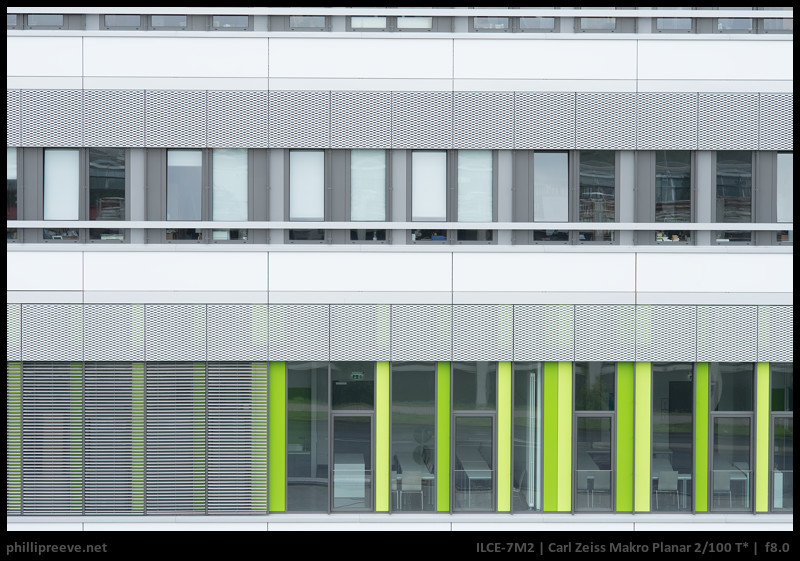

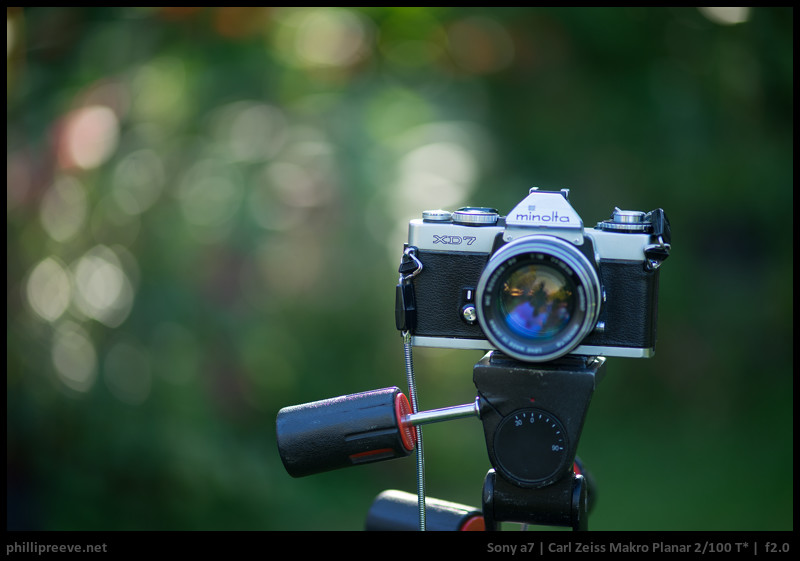
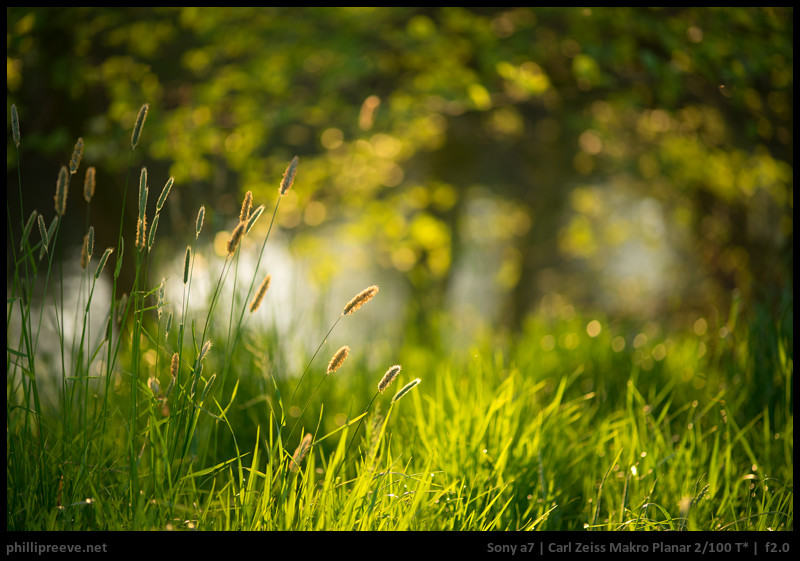
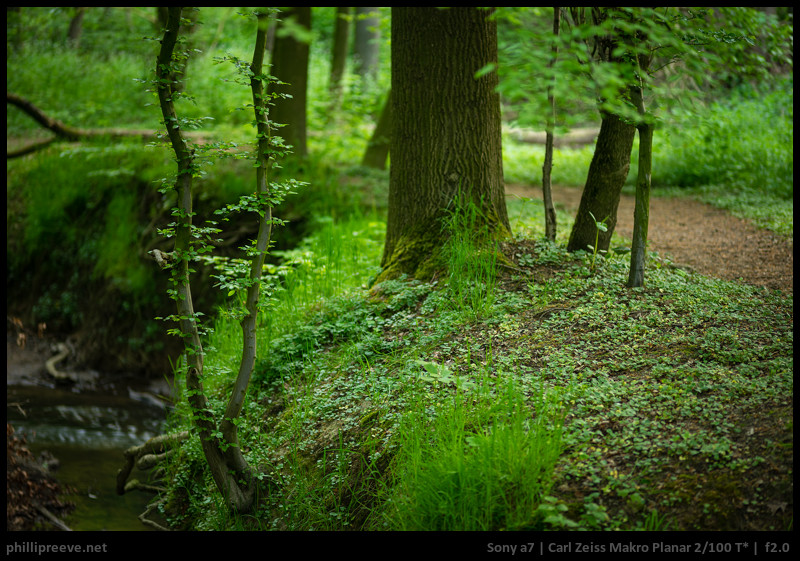

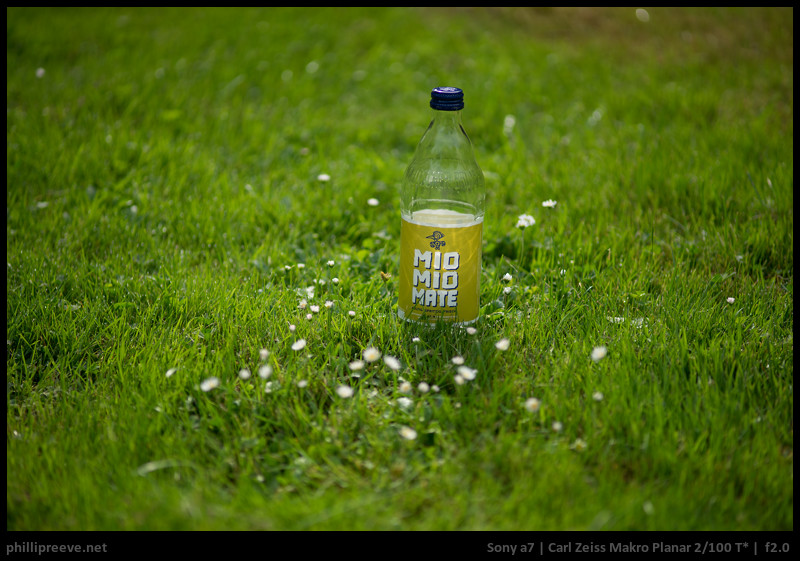
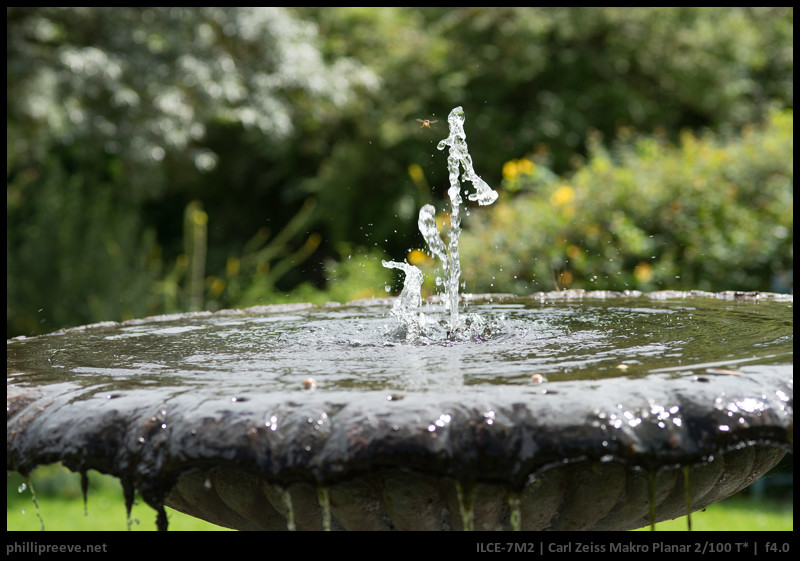
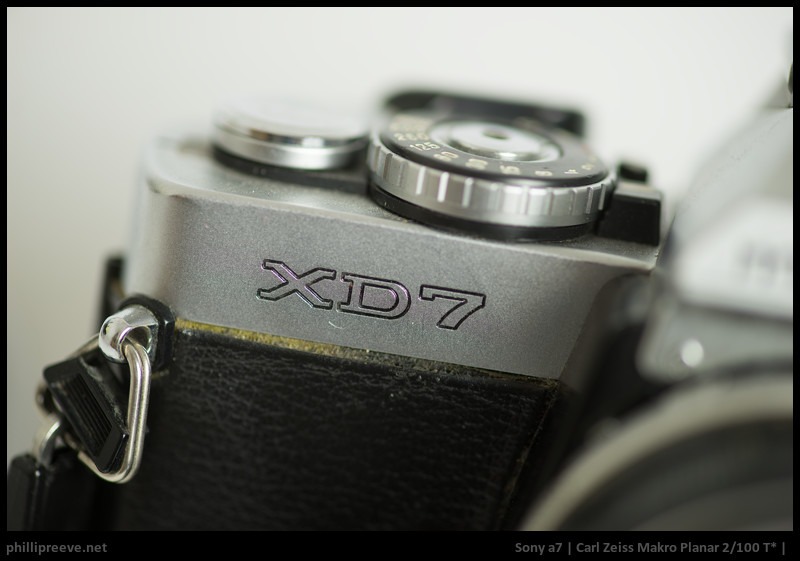
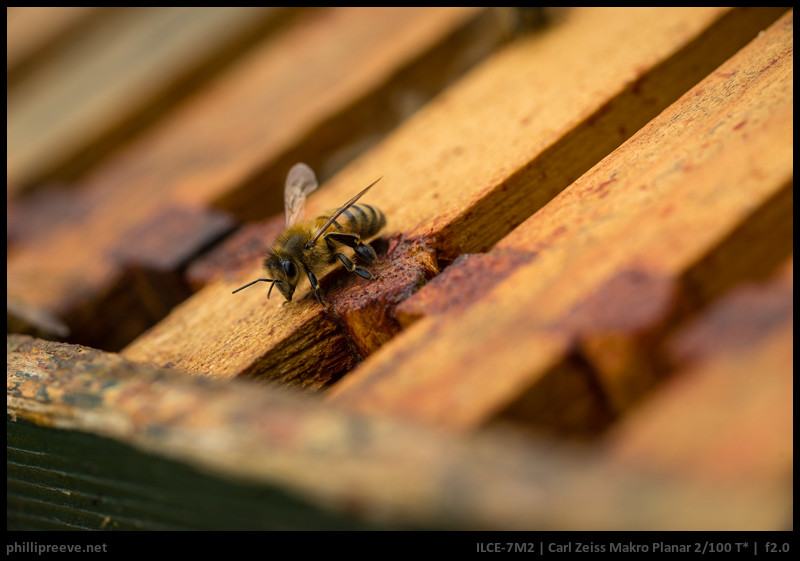

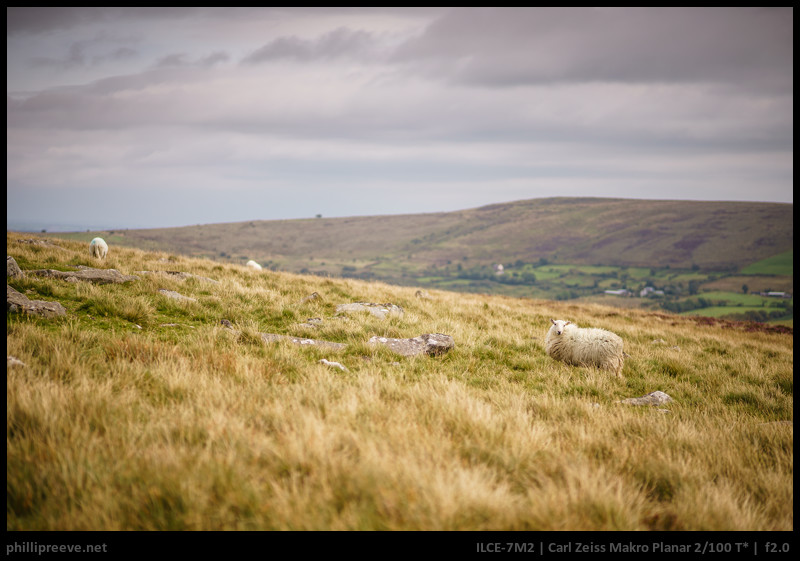
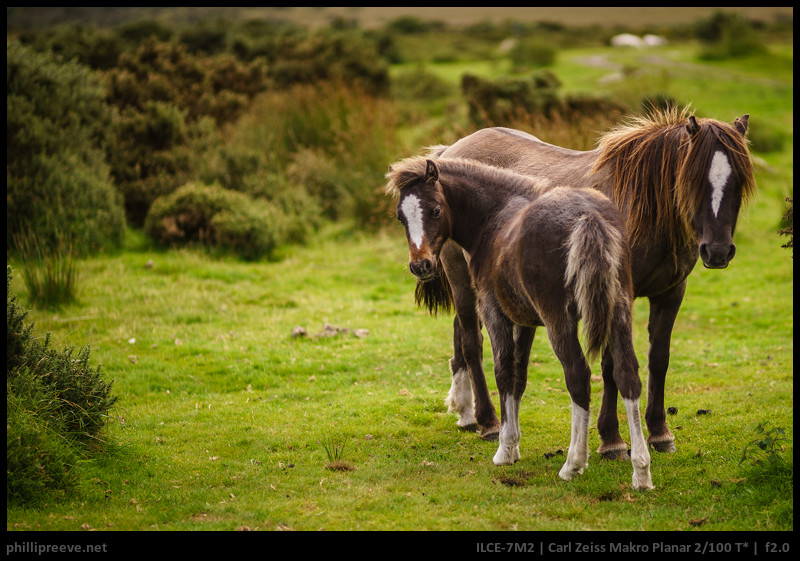
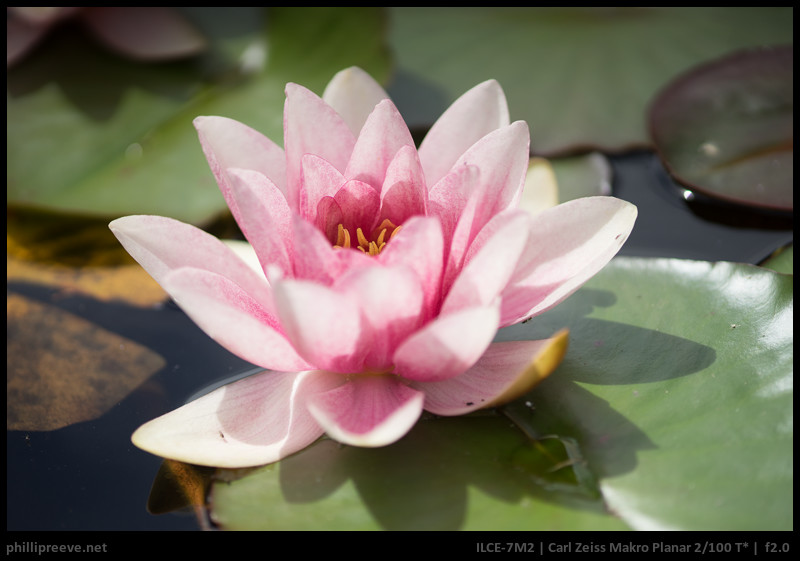

Every lens is an compromise of many faults, 100% is unfortunately not possible, so any lens test should be reviewed very critical!
That CA example is about the worst I’ve seen….even with this lens. If I get a chance and health allows , I’ll try and find something similar to shoot for “the comparison”.
I found the OM Z 100/2 bokeh more than “a tad” smoother.
Thanks for the review.
Yes, the longitudinal CA is quite a showstopper with this lens. It does not show up frequently, but when it does, it can spoil a shot.
This lens gives the subject a distinct 3D “pop” (when critically focused) and renders amazing nuances of colors that only the very best glass can provide.
The Zeiss APO 135/2 is even better, but bigger, heavier, and certainly not a macro.
By the way, many of the alternatives you mention are only valid with a big caveat: no macro capability.
This is the lens I carry when walking through nature. Big far landscapes or tiny little details are rendered beautifully by a single lens. I will only sell this lens when an APO version is released.
Looks like you love your Zeiss 2.0/100 macro on your Sony Alpha 7 just as I like my “Made in Germany” fully-Manual Zeiss 2.0/100mm (non-macro) on my Sony Alpha 7 II. => Brutally sharp and super color fidelity. Much better than the 24-70/4.0-5.6 E-Mount kit-lense which I bought together with the Body and also much better than the 4.0/70-200 G with E-Mount from Sony.
Yes, 100% manual.
The only thing which I am missing is the “electronic focus zoom”.
I just love it and this was one of the reasons why I bought a Sony Alpha. I did not want to have to give up that lense.
There is one more lens in this category, a rare and expensive one, but for a good reason. It’s the Schneider TV Xenon 100 f2. It has huge glass (possibly made for a larger format than 35mm considering that big last element), and has incredible detail in the center at f2 (contrast is ok, but not high, this is a lens from the 60s), possibly beating the planar (not in the corners though).
Bokeh is great, but the biggest strength is almost absence of LoCa (axial chromatic aberrations).
I honestly think LoCa is a huge problem in some lenses, and can pretty much ruin pictures, after all, bokeh is a big part of the picture you take with these lenses. Shooting in well lit conditions pretty much guarantees loca, and don’t even get it out of the closet in the winter (if you have snow that is).
Other lenses I find very disappointing because of huge loca (and pretty much highly praised), are the Distagon 35 1.4 (has fantastic contrast though for a 1.4), the Fuji 35 1.4, and the Samyang 85 1.4 (this one is probably the king of loca).
Phillip
Great job with the site.
I have an A7 and some of your suggested lens.
What is your opinion on using Zeiss lens made for the SL66 camera. Any dual personality or sharpness results?
I have six of them, should I sell?
I have no experience with them but what I have seen from medium format lenses on smaller formats so far makes me doubt that it would make much sense to use them on an a7 when smaller and cheaper lenses perform better.
If you are interested in shift lenses, it might make sense to use your lenses on a shift adapter which would take advantage of the larger image circle. But just to use unshifted, you will usually get slightly less sharp and contrasty results using a lens made for a larger format compared with an equivalently well designed on for your format.
I know it’s a different lens but I have the opportunity to buy a Contax 100mm AE f2.8 Macro for €450. Any idea how that lens would compare to modern alternatives like the Sony 90mm or the Voigtlander 65mm macro? Ideally, I would like to use it both for landscape and macro/portraits.
The Zeiss won’t be as sharp at macro distances and it is a pretty hefty lens. At landscape distances I would see less of a difference in sharpness but the modern lenses have less CA.
Thanks for your reply, Phillip. I guess I’ll pass on it then.
Compare both MTF charts and you will see that the difference between these lenses is about a 1 stop. On Ca, check the pics at https://evtifeev-com.translate.goog/5557-purple-fringing.html?_x_tr_sl=ru&_x_tr_tl=en&_x_tr_hl=en&_x_tr_pto=sc&_x_tr_sch=http. To me, loca doesn’t seem excessive. You can see also their pics comparing contax 85mm 1.4 vs contax 100mm 2.8 makro. On Ebay, I got a near mint copy of contax 1:1 for $224.
Back when you wrote this you said this was the sharpest lens you ever tested and that its price is actually appropriate. With the Voigtländer 65/2 + 110/2.5 and Sigma 135/1.8 out, this statement is obviously outdated.
The Zeiss typically sells for 850€. Add 100€ and you can get a used Sigma 135/1.8 (E-mount). A lens that is optically superior in probably every regard (but only reaches 1:4,7). Do you still think the Zeiss is worth its price?
FYI: your link to the Zeiss Makro-Planar 2/100 album actually links to the Carl Zeiss Planar 2/45.
I just found your post here: https://www.fredmiranda.com/forum/topic/1499509/0#14341125
Think that in most cases the Sigma is the much smarter buy.
Thanks!
A pity it doesn’t look or feel like a full metal Zeiss lens.
Unless I’ll find a Makro-Planar around 700€, I’ll go with the Sigma and feast on its outstanding performance.
slrlensreview.com has the mtf for canon, zeiss, leica and voigtlander. I think people fall in love to leica and voigtlander or zeiss 100.f2 to justify the incredible prices they pay for these lenses.
Hi Phillip, I have the same lense but ZK. I tried to adapt it to Sony A7 with a Voigtlander K-mount to E-mount adaptor but I have problems with the corners. It is not only vignetting but it cuts the corners. Do you think I won’t have those kind of problems with the Novaflex?
Sounds like your adapter is a very old one only suitable for Aps-c. You need to be a bit careful when buying used adapters. This could in fact also happen with an old novoflex one.
The adapter was bought new from Adorama. It seems strange to me that it works well with Voigtlander Color Skopar 20mm F3.5 K-mount. It appears that the problem is with tele-lenses, when the 1st element of the lense is in depth (as in the case with Macro Planar). The user guide says that it is compatible with all K-mount Zeiss and Voigtlander lenses. My question is: do you think I’ll have the same problem with the Novoflex adapter? Thanks!
I have no experience with Pentax K lenses and the Voigtlander Pentax K -> E adapter, so I cannot give you a definitive answer on that.
I just want want to shout out the 50mm version of this lens, the Zeiss Makro-Planar 2/50 Classic. The 50mm version is far and away my favorite lens: sharp, very versatile (standard with close focusing), great bokeh (no onion rings), and no focus shift.
Though I am clearly biased, I would argue it’s worth including in the <$499 and 50mm guides.